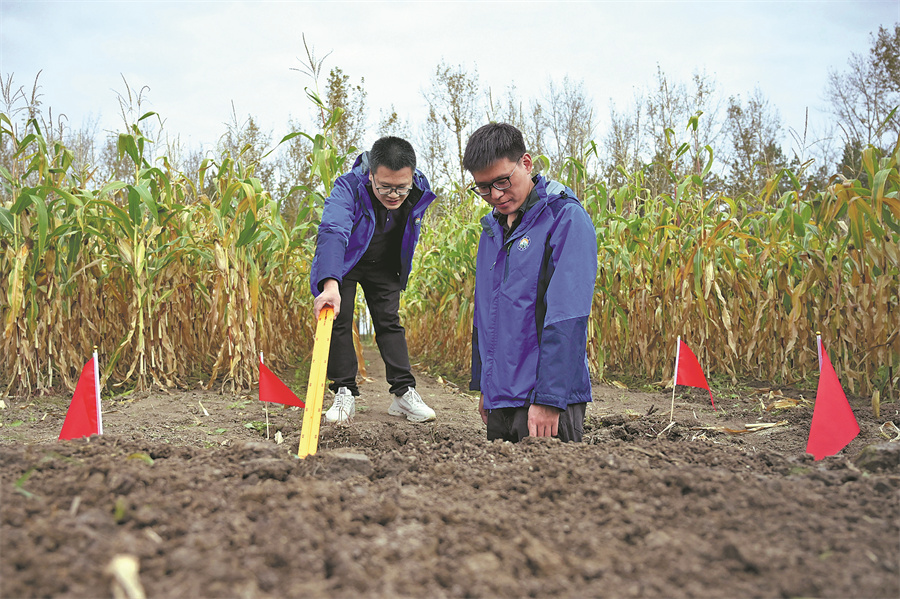Land management model restoring nation's black soil
Food security dependent on protecting fertile growing grounds


Despite farmers applying a large amount of fertilizer, grain production has not continued to increase. Instead, crop resilience has decreased, posing great challenges to agricultural sustainability and food security.
"As a scientist for soil and agriculture, staying in the laboratory is far from enough to truly help farmers solve problems. We need to go into the fields, spend day and night with farmers," Jia said. "Farmers are most concerned about grain production, but it is often difficult for them to give up traditional agricultural management and adopt new methods to fertilize and increase yields, which is where our scientific research and methods come in.
"A seed entering the soil in spring grows into a 2-meter-high corn plant in autumn, with an increase in biomass of approximately 3,000 times. Almost all of this large biomass comes from the soil," Jia said.
"Yields come from organic matter in the soil, and such matter comes from organic fertilizers from plant residues and manure. After farmers harvest, the straw must be returned to the field to scientifically renew the organic matter and protect nutrient sustainability in the soil," said Jia.
Achieving straw return is not easy. Past excessive use of chemical fertilizers has led to soil acidification and compaction, meaning that the northeastern black soil region faces increased problems caused by low winter temperatures and freeze-thaw cycles, Jia said.
According to different conditions and areas, the team explored various organic matter return models tailored to Changchun, Jilin province, Liaohe, Liaoning province, and other cities.
"Clay soil, sandy soil, loamy soil and compacted soil require different methods for straw return. Regardless of the type of soil, we have managed to increase soil organic matter content by around 2 percent and achieve a yield increase of about 10 percent," he said.
Taking Heilongjiang as an example, the province has 15 types of soil, including black soil, black calcareous soil, sandy soil and saline-alkali soil, due to its diverse natural conditions.
"Targeted measures must be taken for different plots of land. Through continuous research and exploration, the team developed the Longjiang Model, which focuses on straw burial deep in the soil," Jia said.
























